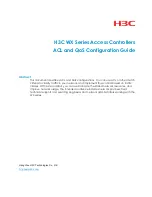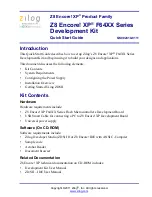• Shuts off Core Clock and System Clock to the ARM Cortex-M core immediately.
• Polls stop acknowledge indications from the non-core crossbar masters (DMA),
supporting peripherals (SPI, PIT) and the Flash Controller for indications that System
Clocks, Bus Clock and/or Flash Clock need to be left enabled to complete a
previously initiated operation, effectively stalling entry to the targeted low power
mode. When all acknowledges are detected, System Clock, Bus Clock and Flash
Clock are turned off at the same time.
• SCG and Mode Controller shut off clock sources and/or the internal supplies driven
from the on-chip regulator as defined for the targeted low power mode.
In wait modes, most of the system clocks are not affected by the low power mode entry.
The Core Clock to the ARM Cortex-M core is shut off. Some modules support stop-in-
wait functionality and have their clocks disabled under these configurations.
The debugger modules support a transition from stop, wait, VLPS, and VLPW back to a
halted state when the debugger is enabled. This transition is initiated by setting the Debug
Request bit in MDM-AP control register. As part of this transition, system clocking is re-
established and is equivalent to normal run/VLPR mode clocking configuration.
24.5 Module operation in low power modes
The following table illustrates the functionality of each module while the chip is in each
of the low power modes. The standard behavior is shown with some exceptions for
Compute Operation (CPO) and Partial Stop2 (PSTOP2).
Debug modules are discussed separately, see "Debug in low power modes" in the Debug
chapter. Number ratings (such as 2 MHz and 1 Mbit/s) represent the maximum
frequencies or maximum data rates per mode. Also, these terms are used:
• FF = Full functionality. In VLPR and VLPW the system frequency is limited, but if a
module does not have a limitation in its functionality, it is still listed as FF.
• Async operation = Fully functional with alternate clock source, provided the selected
clock source remains enabled
• static = Module register states and associated memories are retained.
• powered = Memory is powered to retain contents.
• low power = Memory is powered to retain contents in a lower power state
Module operation in low power modes
Kinetis KE1xZ256 Sub-Family Reference Manual, Rev. 3, 07/2018
556
NXP Semiconductors
Summary of Contents for Kinetis KE1xZ256
Page 2: ...Kinetis KE1xZ256 Sub Family Reference Manual Rev 3 07 2018 2 NXP Semiconductors...
Page 178: ...Usage Guide Kinetis KE1xZ256 Sub Family Reference Manual Rev 3 07 2018 178 NXP Semiconductors...
Page 356: ...Usage Guide Kinetis KE1xZ256 Sub Family Reference Manual Rev 3 07 2018 356 NXP Semiconductors...
Page 410: ...Interrupts Kinetis KE1xZ256 Sub Family Reference Manual Rev 3 07 2018 410 NXP Semiconductors...
Page 604: ...Usage Guide Kinetis KE1xZ256 Sub Family Reference Manual Rev 3 07 2018 604 NXP Semiconductors...
Page 634: ...Usage Guide Kinetis KE1xZ256 Sub Family Reference Manual Rev 3 07 2018 634 NXP Semiconductors...
Page 674: ...Usage Guide Kinetis KE1xZ256 Sub Family Reference Manual Rev 3 07 2018 674 NXP Semiconductors...
Page 820: ...Usage Guide Kinetis KE1xZ256 Sub Family Reference Manual Rev 3 07 2018 820 NXP Semiconductors...
Page 1030: ...Usage Guide Kinetis KE1xZ256 Sub Family Reference Manual Rev 3 07 2018 1030 NXP Semiconductors...
Page 1052: ...Usage Guide Kinetis KE1xZ256 Sub Family Reference Manual Rev 3 07 2018 1052 NXP Semiconductors...
Page 1066: ...Usage Guide Kinetis KE1xZ256 Sub Family Reference Manual Rev 3 07 2018 1066 NXP Semiconductors...
Page 1268: ...Usage Guide Kinetis KE1xZ256 Sub Family Reference Manual Rev 3 07 2018 1268 NXP Semiconductors...
Page 1314: ...Usage Guide Kinetis KE1xZ256 Sub Family Reference Manual Rev 3 07 2018 1314 NXP Semiconductors...
Page 1316: ...Kinetis KE1xZ256 Sub Family Reference Manual Rev 3 07 2018 1316 NXP Semiconductors...


















